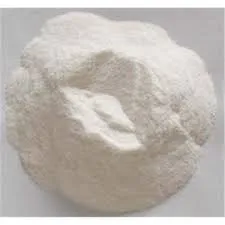
ഡിസം . 21, 2024 13:24 Back to list
hpmc uses in detergent
The Role of HPMC in Detergent Formulations
Hydroxypropyl Methylcellulose (HPMC) has increasingly become an integral component in the formulation of detergents, thanks to its unique properties and versatile functionalities. This semi-synthetic polymer derived from cellulose has proven effective in various applications, especially in enhancing the performance of modern cleaning products.
Understanding HPMC
HPMC is a cellulose ether, which means it is chemically modified cellulose. Its structure consists of a long chain of glucose molecules, with hydroxypropyl and methyl groups added to it. This modification significantly alters the physical and chemical properties of cellulose, making HPMC soluble in cold water and capable of forming a gel or viscous solution. These characteristics establish HPMC as an ideal ingredient in detergent formulations.
Functions of HPMC in Detergents
1. Thickening Agent One of the primary roles of HPMC in detergent formulations is its effective thickening ability. The viscosity of liquid detergents can directly influence their application and performance. HPMC helps achieve the desired thickness, improving the product's shelf stability and tactile qualities, making it easier for consumers to handle and apply.
2. Stabilizer HPMC acts as a stabilizing agent for emulsions and suspensions. In products that contain multiple phases, such as liquid detergents with oil-based cleaning agents, HPMC helps maintain a homogenous mixture, preventing the separation of components over time. This stability is crucial for ensuring the effectiveness and longevity of the product.
3. Film-Forming Agent In certain formulations, HPMC can create a thin film on surfaces. This film acts as a protective layer that can aid in cleaning surfaces more effectively by preventing dirt and stains from re-adhering after washing. The film-forming property also contributes to the overall performance of fabric softeners and other cleaning agents.
hpmc uses in detergent

4. Enhancing Cleaning Performance HPMC can improve the cleaning efficacy of detergents by enhancing the dispersion of active ingredients on surfaces. It allows for better interaction between the cleaning agents and the dirt or stains, making it easier to remove them during the washing process. Additionally, it aids in the dispersion of active ingredients, ensuring a more uniform and efficient cleaning action.
5. Improved Coverage and Spreadability The rheological properties of HPMC facilitate better spreadability of the detergent on various surfaces. This enhancement in coverage means that less product is needed to achieve the same cleaning effect, making detergents more efficient and cost-effective for consumers.
Environmental Considerations
As consumers become more environmentally conscious, the formulation of eco-friendly detergents has gained prominence. HPMC is a non-toxic, biodegradable polymer, making it a favorable choice for manufacturers looking to develop more sustainable cleaning solutions. Its plant-based origin aligns with the increasing demand for natural ingredients in consumer products, helping to reduce the environmental impact associated with synthetic chemicals.
Conclusion
The use of HPMC in detergent formulations offers numerous benefits, ranging from thickening and stabilizing properties to enhanced cleaning performance and environmental sustainability. As the demand for effective and eco-friendly cleaning products continues to rise, manufacturers are increasingly incorporating HPMC into their formulations. Its versatile applications not only improve the overall product efficacy but also contribute to a more sustainable approach to cleaning solutions.
In summary, HPMC stands out as a valuable ingredient in the world of detergents, driving innovation and efficiency while addressing consumer preferences for safer and more sustainable products. Its role in modern cleaning formulations is poised to expand further, reflecting the ongoing evolution of the detergent industry.
-
The Widespread Application of Redispersible Powder in Construction and Building Materials
NewsMay.16,2025
-
The Widespread Application of Hpmc in the Detergent Industry
NewsMay.16,2025
-
The Main Applications of Hydroxyethyl Cellulose in Paints and Coatings
NewsMay.16,2025
-
Mortar Bonding Agent: the Key to Enhancing the Adhesion Between New and Old Mortar Layers and Between Mortar and Different Substrates
NewsMay.16,2025
-
HPMC: Application as a thickener and excipient
NewsMay.16,2025
-
Hec Cellulose Cellulose: Multi functional dispersants and high-efficiency thickeners
NewsMay.16,2025







